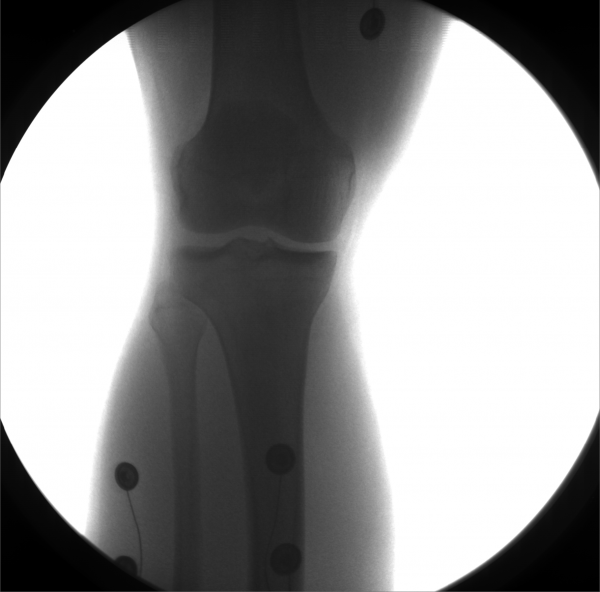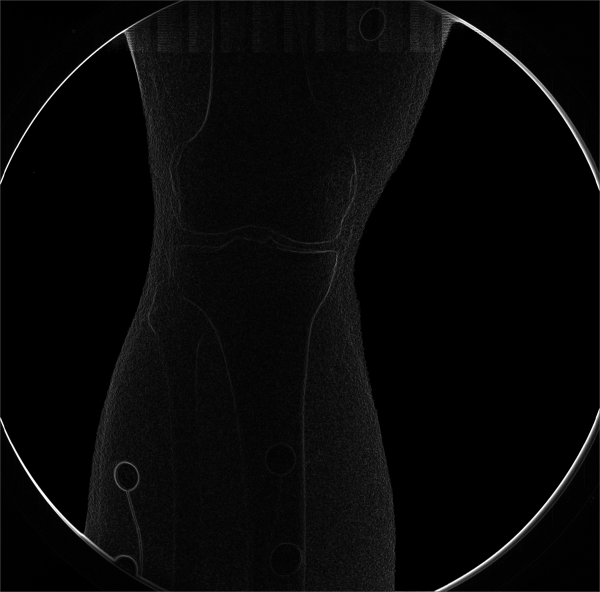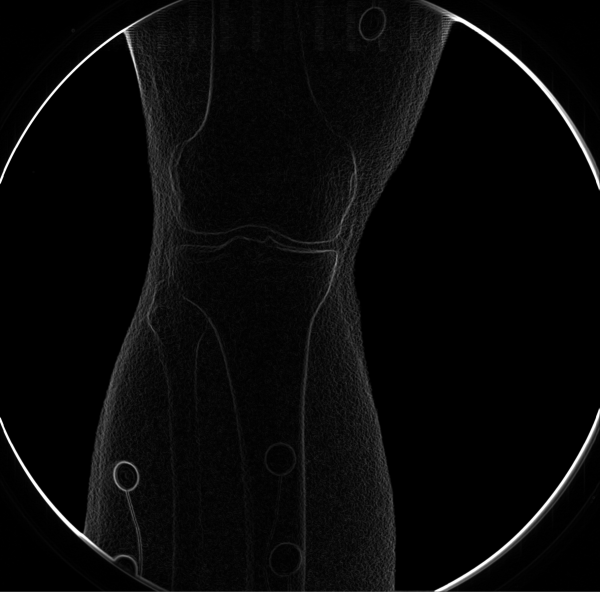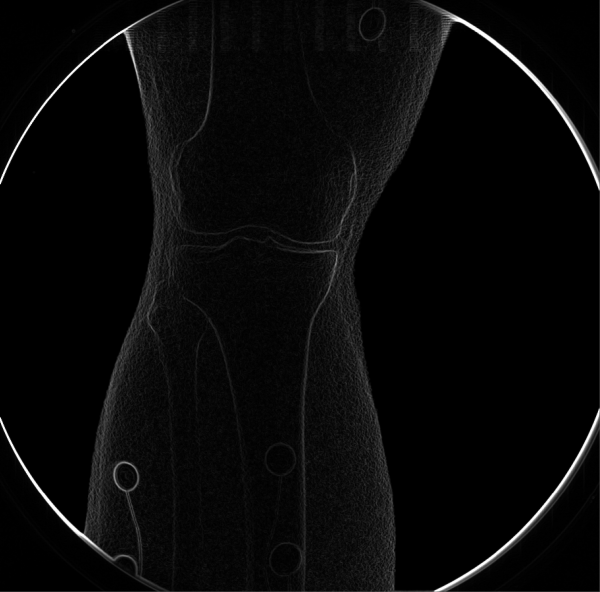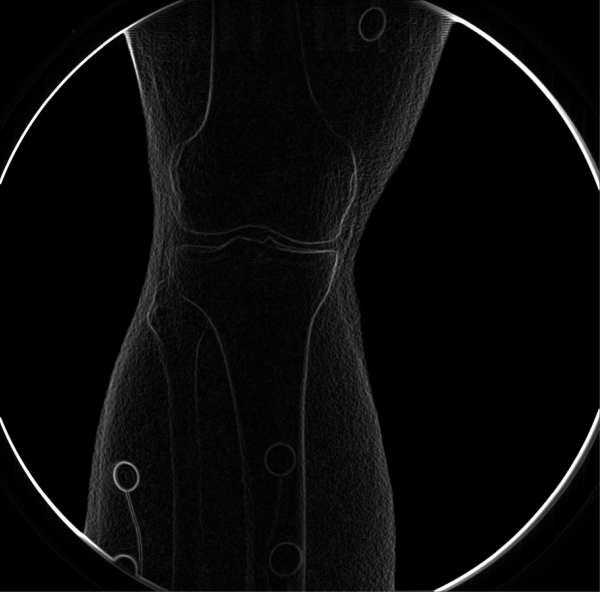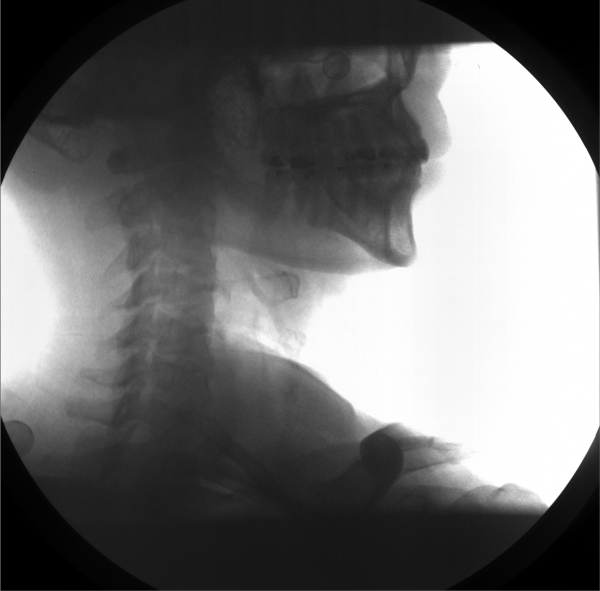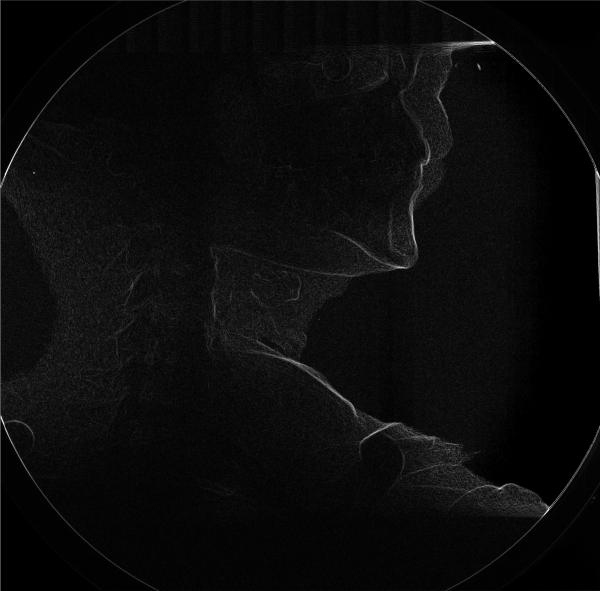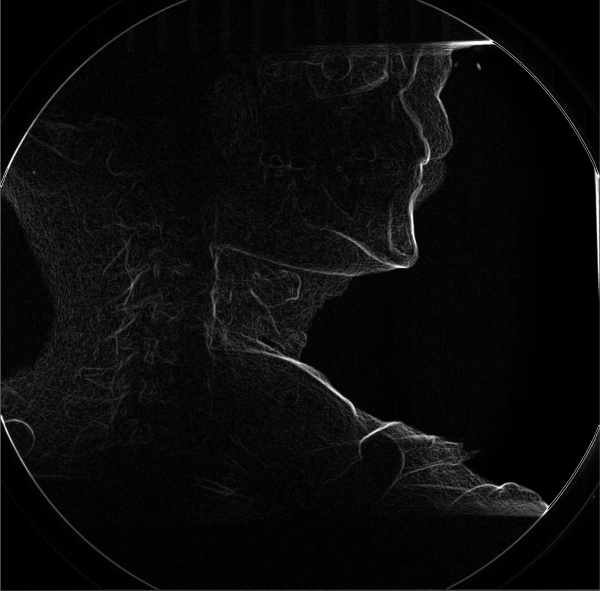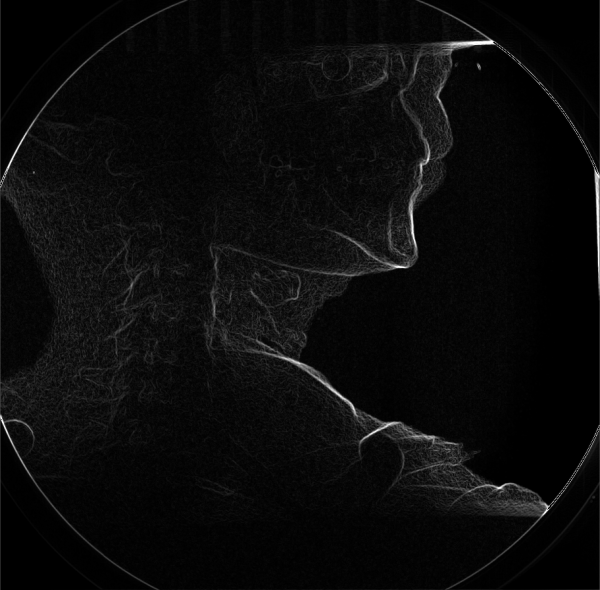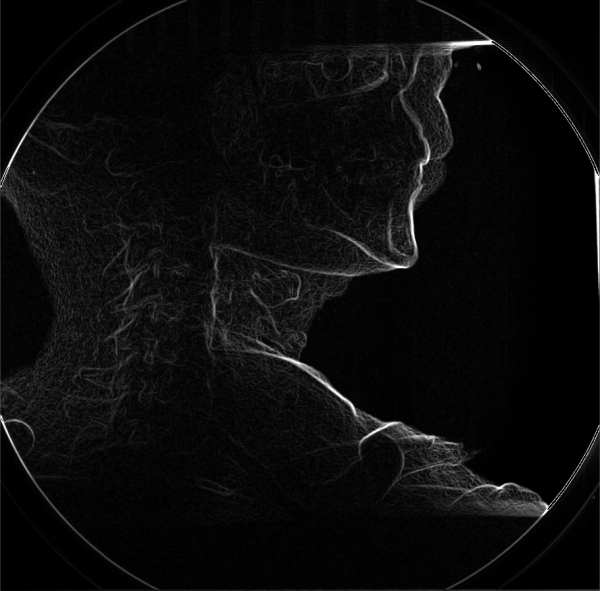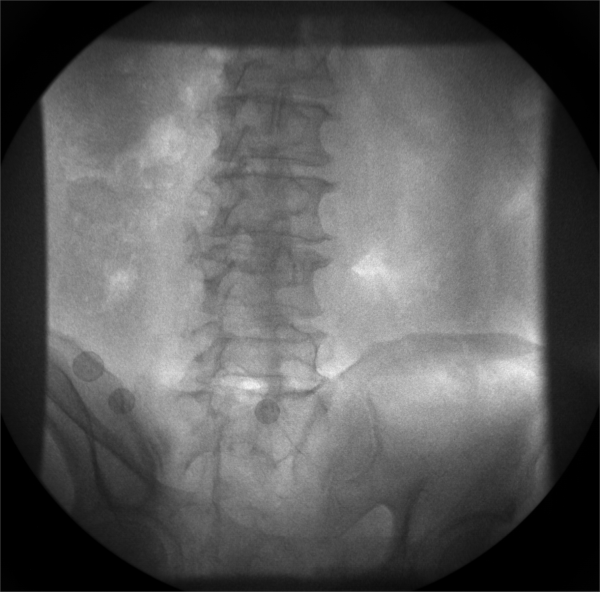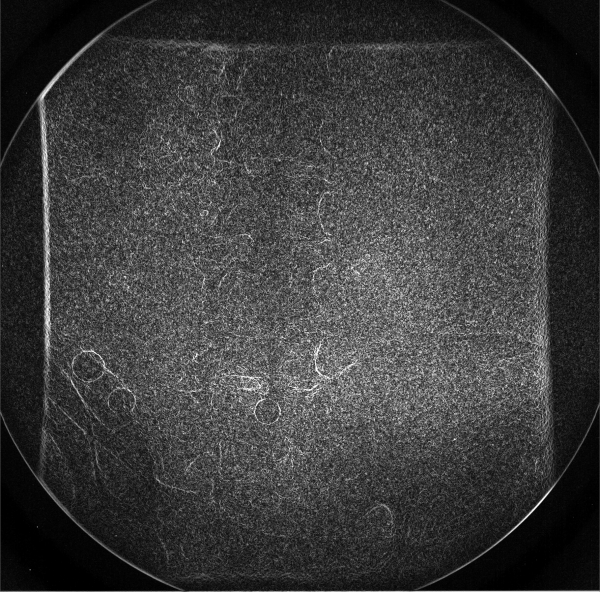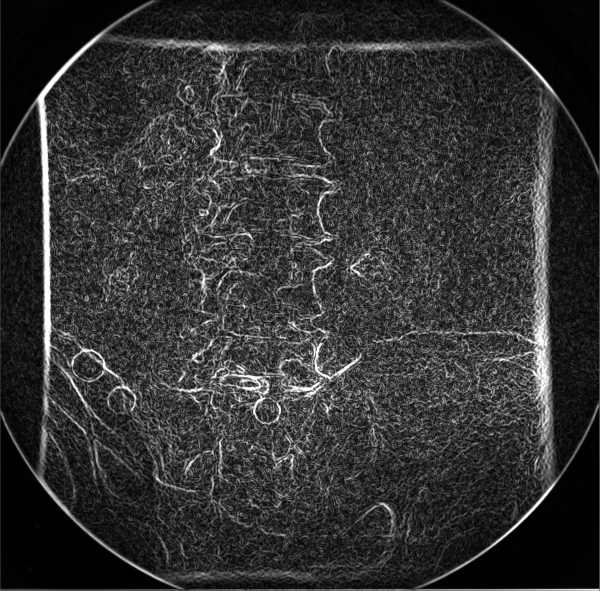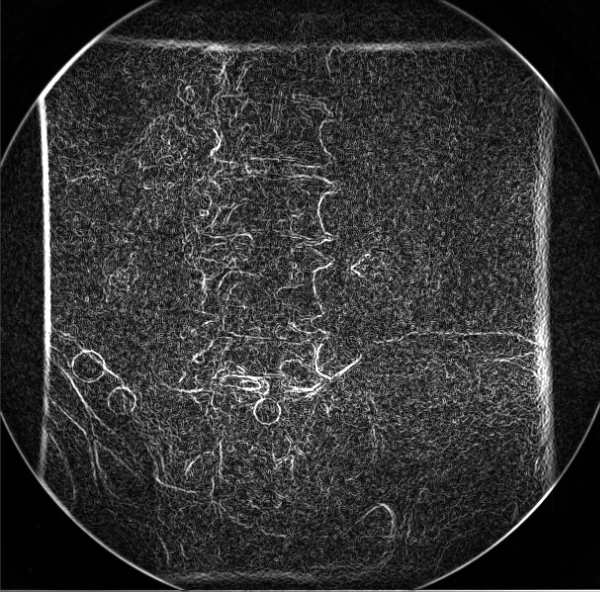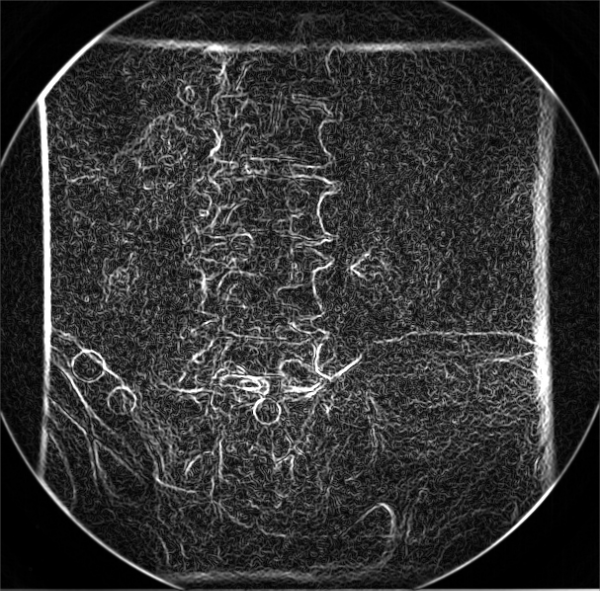CalibrateDSX: The Importance of Image Smoothing and Downsampling
...work in progress...
DRR-based tracking of bones in X-ray images relies heavily on the brightness of the bones' edges in the edge-detected images. Noise in the images, from scatter, cross-scatter, and soft-tissue variability, degrades the quality of these edges. Smoothing and/or resizing the images during correction increases their signal-to-noise ratio, resulting in brighter edges. Some amount of smoothing or resizing is almost always needed to maximize the trackability of the bones.
Smoothing CalibrateDSX uses a Guassian blur algorithm to perform smoothing. It convolves the image with a Gaussian distribution function, giving you the option of a 3x3, 5x5, or 7x7 convolution kernel, and the standard deviation of the function. For example, with a 3x3 kernel, each pixel is replaced by the weighted average of itself and its eight immediate neighbors. The higher the standard deviation (sigma), the greater the weights of the neighboring pixels, and thus the heavier the smoothing.
Resizing Resizing has a similar effect to smoothing because it combines pixel intensity values, but it also reduces the size of the output image. For example, resizing a 1000x1000 image using a scale factor of 0.5 creates a 500x500 output image. Each 2x2 block of pixels is replaced by a single pixel that is an average of the four pixels in the block. If the scale factor does not divide the image size evenly, a Lancos resampling algorithm is used to calculate the output pixel intensities. Because resizing reduces the size of the X-ray images, it also increases the speed of automated tracking in X4D. DRR generation is one of the time-consuming components of tracking, and the time required to generate a DRR is directly proportional to the size of the X-ray image. It is recommended that you reduce the size of your X-ray images as much as possible without losing the smaller features of the bones you are tracking.
Example: Knee
These images were captured at the Biodynamics Lab at the University of Pittsburgh. They are 14-bit grayscale with a resolution of 1824x1800 pixels.
Left: Original image Right: Edge-detected
Left: Smoothed (5x5 kernel, sigma = 2.0) Right: Resized (scaled by 0.5 to 912x900)
Smoothed (5x5 kernel, sigma = 2.0) and resized (scaled by 0.5 to 912x900)
Example: Cervical Spine
These images were captured at the Biodynamics Lab at the University of Pittsburgh. They are 14-bit grayscale with a resolution of 1824x1800 pixels.
Left: Original image Right: Edge-detected
Left: Smoothed (5x5 kernel, sigma = 2.0) Right: Resized (scaled by 0.5 to 912x900)
Smoothed (5x5 kernel, sigma = 2.0) and resized (scaled by 0.5 to 912x900)
Example: LumbarSpine
These images were captured at the Biodynamics Lab at the University of Pittsburgh. They are 14-bit grayscale with a resolution of 1824x1800 pixels.
Left: Original image Right: Edge-detected
Left: Smoothed (7x7 kernel, sigma = 4.0) Right: Resized (scaled by 0.33 to 608x600)
Smoothed (7x7 kernel, sigma = 4.0) and resized (scaled by 0.33 to 608x600)
